
| Manufacturer: | Deren Electric Appliances (Website unknown) Imported by "Around A Pound Distributors" (Website also unknown) |
| Model: | Energy Saver 2U 20W 6400K |
| Application: | General lighting, daylight simulation |
| Wattage: | 20W (Measured: 10W) |
| Diameter (max): | 40mm |
| Length: | 145mm |
| Tube Length: | 320mm (10mm outer diameter) |
| Bulb/Tube material: | Glass, Colour 864 inner phosphor coating |
| Colour Temperature: | 6400K |
| Peak output wavelength: | N/A |
| Total light output: | Unknown - Estimate 450Lm |
| Rated lifetime: | 6'000 Hours |
| Cap: | B22 |
| Operating voltage: | 170-250V AC at 50-60Hz |
| Operating current: | 70mA (pf=0.53) |
| Warmup/restrike time: | 3 minutes/none. Instant start ballast. |
| Cost (original): | £1.00 retail |
| Value (now): | Unknown |
| Place of manufacture: | Unknown, presumed to be a Chinese import |
| Date of manufacture: | Unknown, no date codes present. Presumed to be dating from 2004-early 2005. |
The first electronically ballasted compact fluorescent lamps were rather expensive things, very well engineered too. In fact, it was discovered that for the general market, they were indeed, somewhat over-engineered. Making use of premium quality components and very good manufacturing techniques. This led to lamps being produced with lifetimes shooting up into the 15'000 hour mark, but rather high price tags. I recall in the mid 90s, seeing compact fluorescents on the supermarket shelves with prices starting at around £6, and reaching into double figures for the higher wattages. A 23W Philips PL-ET Pro set me back £7.99 in 2000 I believe (may have been 1999 - can't remember precisely!). While this was something hugely favoured by the commercial market, where these lamps were finding an increasingly common place for areas where round the clock lighting was required, it turned out that the general public were in most cases more interested in the energy savings gained by the use of compact fluorescent lamps than the overall lifetime.
Of course, a number of manufacturers were quick to catch onto this idea. The natural result being lamps based around precisely the same technology, but with cheaper components being used, and often the production being outsourced to countries such as Taiwan and China to reduce production costs still further. It is for this reason that in many places now, it is easy to pick up compact fluorescent lamps in common wattages for less than £2 - in some cases even less than £1. Of course, the lifetime of these lamps is somewhat less than their more expensive counterparts - in face quite considerably less. The average lifetime of your "cheap" compact fluorescent being in the 5000 to 6000 hour mark. This is of course still well, well longer than anything that can be achieved by any common incandescent lamp (some higher end halogens can just about reach the 5000 hour mark under ideal conditions) - and of course, this still comes with the same energy savings as the higher end electronic compact fluorescents too (though they're generally slightly less efficient - not drastically though).
This is a pretty typical example of one of the cheaper imported compact fluorescent lamps out there. A rated 6000 hour lifetime, efficacy of roughly 50Lm/W, and packaging which features text so badly translated into English that it's almost comical. There is one thing about this particular lamp which makes it a little unusual (in the UK at least), and that's the colour temperature. This lamp features a colour 864 phosphor. This means that it's a very cool white, in fact the 6400K colour temperature of this lamp is meant to be equal to that of noon-time daylight. That assumption would appear to be correct - my camera's colour balance even agrees with it. For general lighting, I tend to prefer warmer colour temperatures, but ideally, I'd prefer to have something like this for illuminating a workbench or drawing board, as it's a more natural light to work under. High colour temperature lamps are quite hard to find here, as warmer (2700 and 3000K temperatures being the norm) are preferred by the majority in the UK for general lighting. Hence daylight temperature lamps are more of a specialty item here than in many other countries.
One interesting quirk of this particular lamp is that it is totally and completely - blatantly miss-labelled. It CLAIMS to be a 20W lamp...when in fact consumes just a touch under 10W (it's about 9.5 I think - the readout fluctuates from 9 to 10W - my wattmeter only has a 1W resolution I'm afraid). If you'd bought this expecting the output to be that of a normal 20W CFL, you'd have been sorely disappointed. Unsurprisingly for a lamp which can be obtained so cheaply (less than £0.50 apiece when bought in bulk), the reliability of these seems to be somewhat variable to say the least. The person who donated me this lamp has installed several of these in a commercial premises previously, and found that while some of them failed after only a couple of days of operation, some of them are still working to this day, after around 12'000 hours.

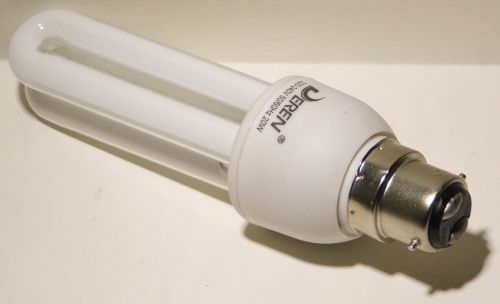
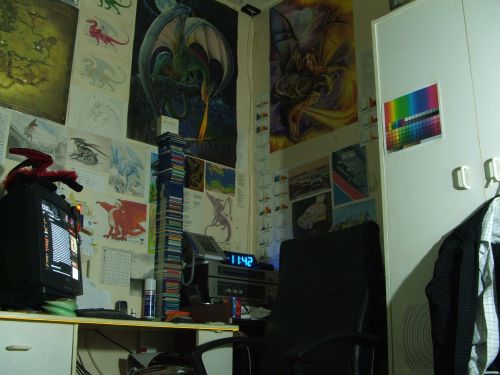
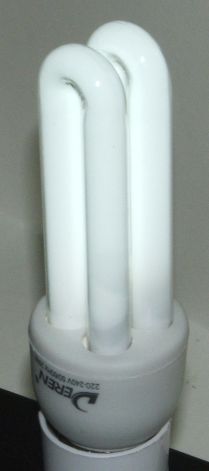
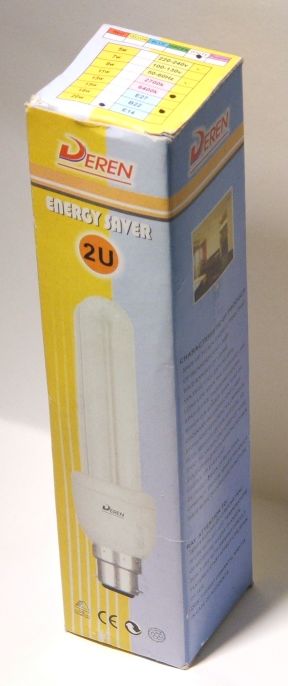
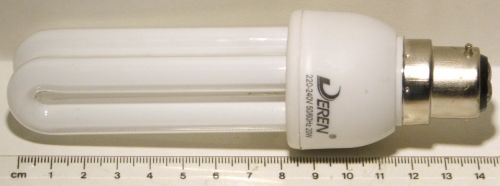

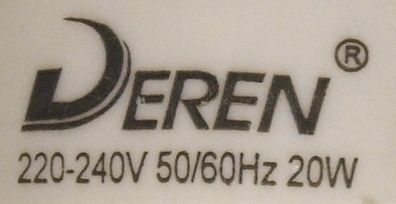

This lamp added to the Virtual Display Shelf on the 10th December 2005 at 02:45.
References:
None.
Acknowledgements:
Many thanks to the reader of this website who donated this lamp!
This page last updated on the 13th June 2023: Changes to page formatting to improve readability on mobile devices and to improve search engine optimisation.